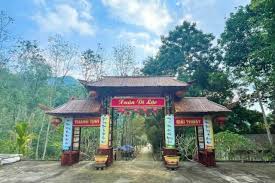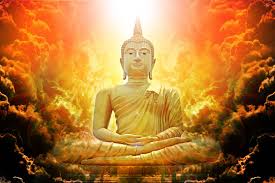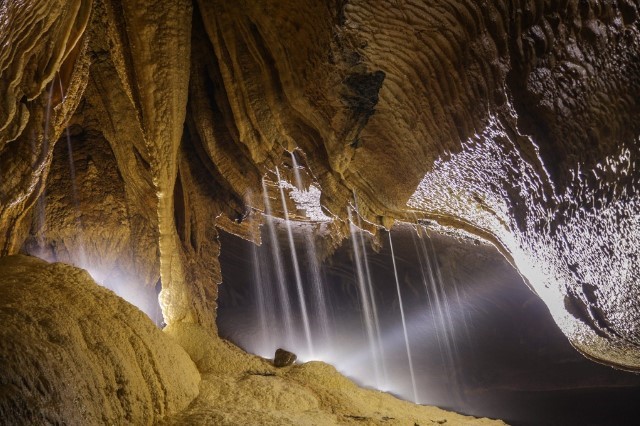Thach Long Pagoda
Thạch Long Pagoda, also known as Chùa Hang (Cave Pagoda), is one of the most unique and spiritual landmarks in Bắc Kạn Province, Vietnam. Located inside a natural limestone cave in Cao Kỳ Commune, Chợ Mới District, the pagoda holds deep historical, cultural, and religious significance for the local people.
1. History and Origins
Thạch Long Pagoda is rooted in both Buddhist tradition and local folklore. According to legend, villagers from Vi Hương were transporting a statue of the Buddha by boat along the river. When the boat reached a section near Bó Mi in Cao Kỳ, it mysteriously stopped moving. The villagers rested for the night, and by morning, the statue had disappeared.
Following a trail of incense smoke, they discovered the statue had miraculously appeared inside a nearby cave. Interpreting this as a spiritual sign, the villagers decided to establish a temple on that very site — thus, Thạch Long Pagoda was born.
The pagoda later played a role in Vietnam’s resistance war against French colonial forces, serving as a secret storage area for weapons and supplies. President Hồ Chí Minh is also said to have visited this sacred place multiple times during wartime.
2. Architecture and Layout
Thạch Long Pagoda is built within a natural cave, offering a peaceful and mystical environment unlike typical temple structures. Instead of ornate rooftops or pagoda towers, the cave itself forms the foundation and shelter of the temple.
Key features include:
-
Main Cave Chamber: Acts as the central worship area with altars dedicated to Buddha Shakyamuni and various Bodhisattvas.
-
Stalactite and Stalagmite Formations: Enhance the spiritual atmosphere with natural, awe-inspiring beauty.
-
Subdivided Sections: Known locally as the Thiên (Heaven) and Âm (Earth) areas, symbolizing harmony between the divine and the human world.
-
Natural Lighting: The cave’s natural openings allow filtered light to enter, creating a serene ambiance for meditation and prayer.
Though modest in structure, the harmony between nature and faith makes this pagoda spiritually powerful.
3. Spiritual and Cultural Value
Thạch Long Pagoda is an important religious site where locals and travelers come to:
-
Pray for peace, health, and guidance
-
Celebrate Buddhist festivals, especially during the Lunar New Year (Tết) and Vu Lan season
-
Experience historical storytelling through its legends and role in national defense
-
Appreciate natural beauty in a sacred environment
Because it is set in a cave, it also offers a quiet space for personal reflection and mindfulness.
4. Visiting Information
-
Location: Cao Kỳ Commune, Chợ Mới District, Bắc Kạn Province, Vietnam
-
Opening Hours: 6:00 AM – 5:00 PM daily
-
Entrance Fee: Free (donations are welcome)
-
Best Time to Visit: During the annual spring festival (7th day of the first lunar month), or early morning for quiet meditation
-
Travel Tips:
-
Wear comfortable walking shoes (there may be stairs and rocky terrain)
-
Dress modestly out of respect for the sacred space
-
Bring a flashlight if you want to explore deeper parts of the cave
-
5. How to Enjoy Your Visit
-
Start by slowly entering the cave, letting your eyes adjust to the natural light
-
Pause at the main altar to offer incense and make a silent prayer
-
Take time to admire the cave’s natural rock formations and feel the tranquility
-
Speak with local monks or caretakers if they are present — they may share local stories or temple history
-
Spend a few minutes in quiet meditation to truly appreciate the stillness and sacredness of the site
Conclusion
Thạch Long Pagoda is not just a place of worship — it is a blend of nature, legend, history, and spirituality. Its setting inside a limestone cave makes it one of the most unique religious sites in Vietnam. For visitors to Bắc Kạn seeking a deeper cultural and spiritual experience, this hidden gem is well worth the journey.




